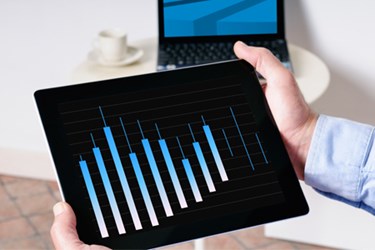How Is Anonymized Data Best Utilized?
By Megan Williams, contributing writer

From Star Trek-like technology to the fight against Ebola, data anonymization is a cornerstone of many of the most interesting advances of the use of information in tackling medical-related questions.
Healthcare is just cutting its teeth on the potential that secondary uses of data holds. Data mining and analytics are changing everything from the way diseases are treated to how research is conducted. As with all uses health information, security is a pressing concern and anonymizing data is a widely-used part of the patient data security puzzle. But what is that data being used for?
A Precursor To The Tricorder
Jerry Howard, a data scientist and former president of Kaggle (an online data scientist community), realized the potential of the new techniques his community was discussing weren’t being fully utilized. “Data science is a very sexy job at the moment,” Howard said. “But when I look at what a lot of data scientists are actually doing, the vast majority of work out there is on product recommendations and advertising technology and so forth.”
According to Wired, after Howard left Kaggle a year ago, he set off to find a better use for the data he was examining and landed on healthcare. He founded a new company, Enlitic, which intends to use advanced, machine-learning algorithms (“deep learning”) to diagnose illness and disease. The end-result will be a system similar to Star Trek’s tricorder, just less portable.
Howard notes healthcare has been slow to pick up on deep learning algorithms, primary due to the cost of building the computers needed to run them. As time passes though, that cost is dropping. The most pressing concern going forward is getting enough anonymized data to train the machines.
DNA And Disease Analysis
It’s not all about research though. QuantumMDx, a medical device maker, has revealed a DNA analyzer that can identify a disease within minutes after being fed material containing DNA. This though, is just the beginning.
After the data is gathered through the DNA analyzer and anonymized, it can also be geo-stamped and shared across the globe – helping asses global epidemic and pandemic situations by identifying pathogens, virus growth/spreading rates, and tracking transmission rates. The touch screen analyzer is expected to cost around $1,000 and is being rolled out in developing countries where it won’t require FDA approval.
The Fight Against Ebola
Though not being gathered from the clinical side, anonymized data is being used in Senegal to travel the geographical movements of 150,000 mobile phone users by Swedish nonprofit Flowminder. According to The Scientist, analysis is used not to restrict movement, but to gather information on where preventative methods should be focused.
Going Deeper
Health IT Outcomes recently partnered with Privacy Analytics to produce a webinar, How To Accelerate Insight With Anonymized Health Data, the provided insight into:
- growth and challenges of anonymizing data for secondary purposes;
- how leading practitioners enable better analytic and business outcomes; and
- a maturity model that illustrates a progression path to leveraging data for secondary purposes securely in repeatable and scalable way.
Click here to view the webinar, and to read more about the actual effectiveness of anonymizing patient data, we recommend our article, “Protect Patient Data With De-Identification.”
